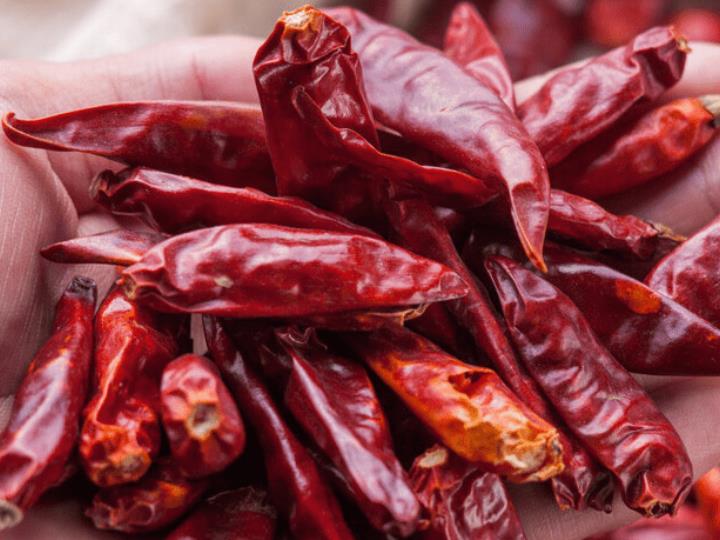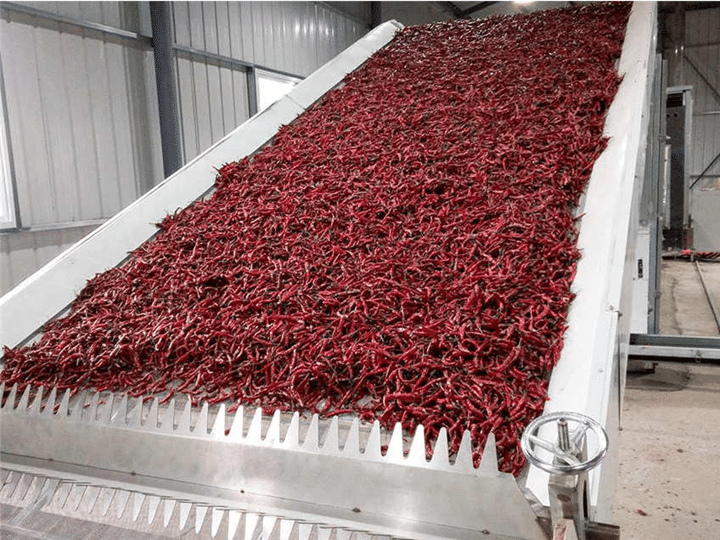
There are three main types of pepper: line pepper, Chaotian pepper, and Xinjiang plate pepper. There are more than 2000 kinds of chilli in the world. The higher the degree of pungency, the more pungent the chilli. The harvest season of chilli is the rainy season. Generally speaking, the frequency of autumn rain is more than 70% – 80%. Therefore, if the pepper can not be dried in time, it will cause mildew. Therefore, the chili dryer is welcomed by more and more people.
Drying process of pepper
Pepper drying includes processes such as fresh pepper picking, transportation, and storage, pretreatment before processing, drying, picking, packaging, and warehousing. There are two traditional drying methods for chili. One is to bind them manually one by one, and then hang them on the coal fire for drying. The other is sunshine. The pepper dried by the above two conventional drying methods has poor quality, more white shells, and high labor intensity. And the processing capacity is small. In addition, pepper is a food product, which is strict with the pollution problem. With the improvement of drying technology, more and more pepper growers use chili dryer to dry pepper.

Key points of drying processing operation:
- For fresh pepper picking, it is necessary to select a completely mature pepper with normal color and complete fruit.
- A large number of fresh chilies shall be well-ventilated during transportation and stacking. In particular, the stacking height shall not be higher than 1m. The stacking time is not easy to exceed 36h.
- Remove sundries such as pepper stems, leaves, dust, etc. through pretreatment
- During the drying process with pepper drying equipment, the paving thickness and drying temperature shall be selected according to the processing technology requirements. The moisture content of dry pepper should meet the storage requirements.
- Determine the moisture content of dried chilli through the changes in drying temperature, paving thickness, drying time, and other parameters in the drying process of chili dryer. At the same time, the changes of appearance color, and fruit integrity of pepper were observed.
- The selective inspection must be carried out after a period of natural moisture recovery of dry pepper. Otherwise, dried chilies are easy to break.
- During packaging and warehousing, pay attention to the dry ventilation and stacking height of the warehouse to avoid moisture regain, mildew, and breakage of dry pepper.
